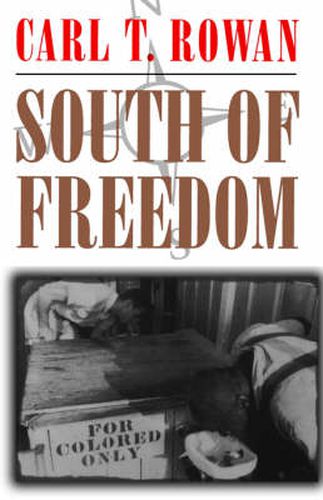Readings Newsletter
Become a Readings Member to make your shopping experience even easier.
Sign in or sign up for free!
You’re not far away from qualifying for FREE standard shipping within Australia
You’ve qualified for FREE standard shipping within Australia
The cart is loading…






This title is printed to order. This book may have been self-published. If so, we cannot guarantee the quality of the content. In the main most books will have gone through the editing process however some may not. We therefore suggest that you be aware of this before ordering this book. If in doubt check either the author or publisher’s details as we are unable to accept any returns unless they are faulty. Please contact us if you have any questions.
In 1951, Carl Rowan, a young African American journalist from Minneapolis, journeyed six thousand miles through the South to report on the reality of everyday life for blacks in the region. He sought out the hot spots of racial tension, including Columbia, Tennessee, the scene of a 1946 race riot, and Birmingham, Alabama, which he found to be a brutally racist city, and returned to the setting of his more personal trials: McMinnville, Tennessee, his boyhood home. In this
balance sheet of American race relations,
Rowan plots the racial mood of the South and describes simply but vividly the discrimination he encountered daily at hotels, restaurants, and railroad stations, on trains and on buses.
Originally published in 1952 and long out of print, South of Freedom is a first-rate account of what it was like to live as a second-class citizen, to experience the segregation, humiliation, danger, stereotypes, economic exploitation, and taboos that were all part of life for African Americans in the 1940s and 1950s. For this edition, Douglas Brinkley provides a new introduction, incorporating recent interviews with Rowan to place the work in the context of its time.
An engaging, disturbing look at the opinions of the time on the
Negro problem,
Rowan’s tales of travel in the South under Jim Crow are especially valuable today as a means of seeing how far we have advanced, and fallen short, in forty-five years.
$9.00 standard shipping within Australia
FREE standard shipping within Australia for orders over $100.00
Express & International shipping calculated at checkout
This title is printed to order. This book may have been self-published. If so, we cannot guarantee the quality of the content. In the main most books will have gone through the editing process however some may not. We therefore suggest that you be aware of this before ordering this book. If in doubt check either the author or publisher’s details as we are unable to accept any returns unless they are faulty. Please contact us if you have any questions.
In 1951, Carl Rowan, a young African American journalist from Minneapolis, journeyed six thousand miles through the South to report on the reality of everyday life for blacks in the region. He sought out the hot spots of racial tension, including Columbia, Tennessee, the scene of a 1946 race riot, and Birmingham, Alabama, which he found to be a brutally racist city, and returned to the setting of his more personal trials: McMinnville, Tennessee, his boyhood home. In this
balance sheet of American race relations,
Rowan plots the racial mood of the South and describes simply but vividly the discrimination he encountered daily at hotels, restaurants, and railroad stations, on trains and on buses.
Originally published in 1952 and long out of print, South of Freedom is a first-rate account of what it was like to live as a second-class citizen, to experience the segregation, humiliation, danger, stereotypes, economic exploitation, and taboos that were all part of life for African Americans in the 1940s and 1950s. For this edition, Douglas Brinkley provides a new introduction, incorporating recent interviews with Rowan to place the work in the context of its time.
An engaging, disturbing look at the opinions of the time on the
Negro problem,
Rowan’s tales of travel in the South under Jim Crow are especially valuable today as a means of seeing how far we have advanced, and fallen short, in forty-five years.